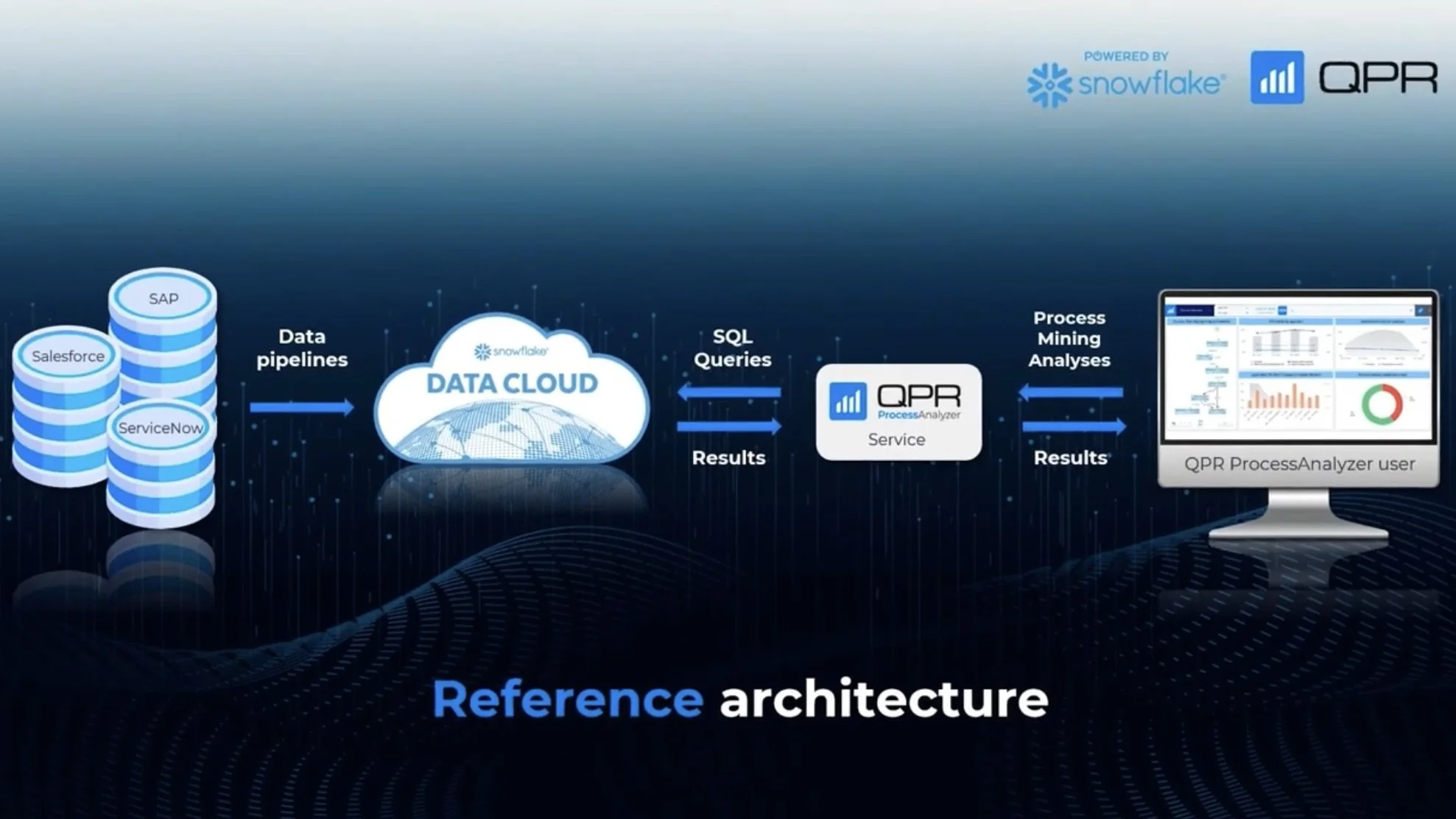How to succeed in process mining with Snowflake and QPR ProcessAnalyzer
We are excited to collaborate with some of the leading process development technologies to strengthen our process mining capabilities even further. We had a chance to talk to Matti Ekheikki, Director of Strategy, Partnerships, and Alliances at QPR Software about process mining. With years of experience in the field, Matti shares his tips on how to succeed in process mining and the role Snowflake plays in it.
Tips for successful process mining
Process mining alone doesn’t solve process-related problems, but it is unbeatable in providing one, solid truth that is backed up with data. It creates an understanding of the state of processes and surfaces hidden inefficiencies. And when those inefficiencies are translated into monetary terms, the power of process mining really does become evident from a business perspective.
Here are a few tips from Matti, on how to set yourself up for success on your process mining journey.
1. Be mindful of the scope
It is surprisingly common to narrow the scope down too much. This probably stems from the old ways of doing things – when process mining was tedious and time-consuming. Nowadays there is no reason to focus on just one country unit or product category when the technology enables a nearly limitless amount of data to be analysed with no added labour. Besides, once the process mining model is established, a more extensive data set gives a better chance for benchmarking and thus better insights into your business.
2. Have a clear, business-driven case for process mining
Since process mining in itself doesn’t solve problems, only makes them visible, it is best to have a solid use case with clear goals before getting started. Digital transformation projects like large IT system renewals, e.g. ERP or supply chain solutions, are an excellent use case to get the most out of process mining. Another fruitful use case is to seek support for initial hypotheses through process mining.
3. Know your audience to get your message across internally
This one is for those who have already dipped their toes in process mining and identified a genuine point of development. The data is there to back up your point, but don’t self-sabotage by overwhelming the business leaders with massive amounts of data. Instead, speak their language and tell the story clearly and concisely. Data definitely helps you in getting it right, but don’t lose your momentum with the wrong approach.
4. The quality of data determines the level of success
Sometimes process mining gets a bad rep if prior experiences with it have been unfruitful due to the difficulty of getting quality data to work with. Having a knowledgeable process mining partner on your side helps immensely. The second thing is to centralise data with solutions like Snowflake.
Process mining and Snowflake
Snowflake makes real-time process mining effortless and secure, so you know exactly what to change to improve the way your business runs. And QPR ProcessAnalyzer runs natively on the Snowflake data cloud, it connects all operative data in one place.
Architecture in a nutshell
Utilise data directly from your operative IT systems, like Salesforce, SAP and Oracle.
If you are already using Snowflake and have data pipelines in place, it enables you to move data into the data cloud almost in real-time.
QPR platform provides an intuitive and no-code environment for you to analyse business processes and configure your own KPIs and business rules, for example.
Sending requests to the QPR application translates them into native SQL queries for Snowflake.
All the processing of big data volumes happens in the Snowflake data cloud and returning the results of the algorithms and calculations through the QPR platform to the user interface instantly. It happens in a fraction of the time, regardless of data volumes.
For organisations that already use Snowflake, getting started with QPR ProcessAnalyzer is easy. When the data from operative IT systems is already uploaded to Snowflake, QPR plugs in and starts analysis to provide insights instantly.
For those not yet using Snowflake, no worries! QPR ProcessAnalyzer can plug into the source IT systems, and act as the data pipeline to upload data into the Snowflake data cloud. This is key in order to run the analysis: QPR sends queries and calculations against the Snowflake platform.

